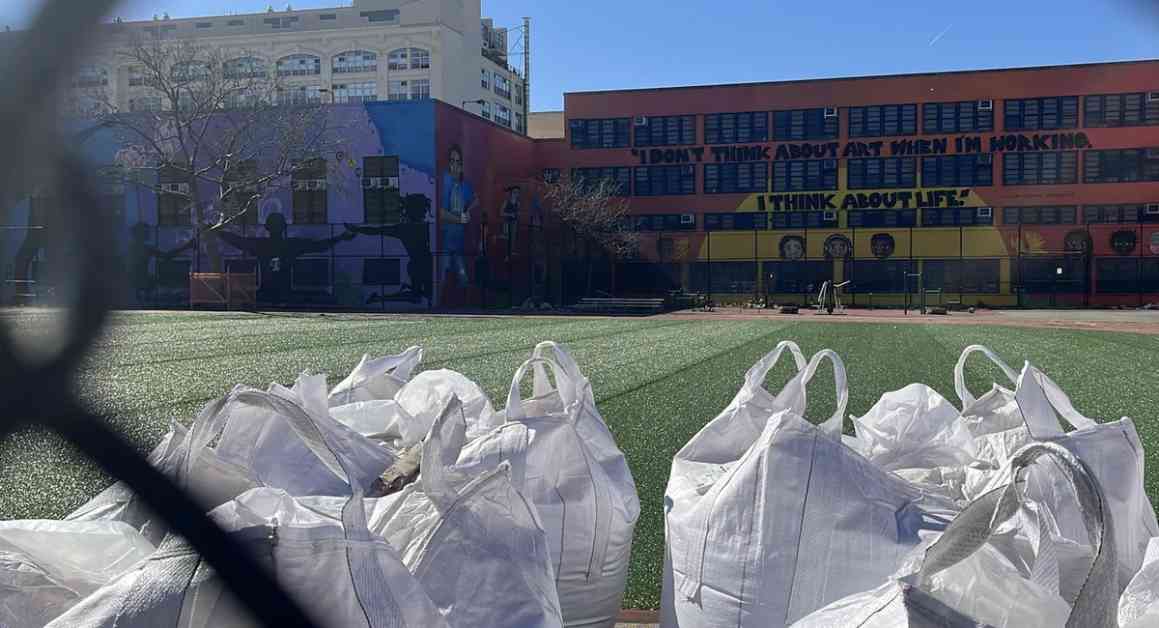The conflict over the use of artificial turf in New York City parks has sparked a heated debate between city councilmember Christopher Marte and environmental activists. Marte recently introduced legislation that seeks to ban the use of synthetic turf in city parks, citing concerns about its impact on people and the environment.
Critics of artificial turf argue that it traps heat, spreads toxic chemicals, and increases injuries to parkgoers. Marte shared a personal experience of stepping on artificial turf in East River Park, where the temperature was a staggering 120 degrees Fahrenheit, compared to the 90-degree temperature just across the street.
Artificial turf, which features a plastic layer that mimics natural grass, is typically supported by a subsurface of “crumb rubber” made from ground-down recycled tires. While turf has gained popularity due to its low maintenance requirements, Nyah Estevez from Beyond Plastics raised concerns about the potential health risks associated with synthetic turf.
Estevez highlighted that synthetic turf exposes children to toxic chemicals and sheds microplastics that can ultimately end up in people’s bloodstreams. She emphasized that the origins of synthetic turf lie in the petrochemical industry, underscoring the environmental and health implications of its usage.
The debate over artificial turf is not unique to New York City, as evidenced by a similar controversy in Montclair, New Jersey, where parents clashed over the installation of a turf playing field. While some parents argued that artificial turf is safer for athletes, others expressed concerns about its long-term impact on health and the environment.
Pat Arnow, a member of East River Action, recounted an incident where plastic byproducts from artificial turf at Pier 42 in Manhattan flowed into the East River after a rainstorm. The visible pollution raised alarms about the potential contamination of waterways due to synthetic turf materials.
As the legislation proposing a ban on artificial turf makes its way to the City Council for review, the New York City Parks Department has pledged to assess the bill’s implications. The department’s plans to install new turf at 50 existing fields over the next five years may face scrutiny in light of the ongoing debate surrounding the use of synthetic turf in public spaces.
While the benefits of artificial turf in terms of maintenance and durability are evident, the potential risks associated with its use have sparked a contentious turf war between proponents of natural grass and advocates for environmental health. As the city grapples with the decision of whether to continue using synthetic turf in its parks, the outcome of this debate will have far-reaching implications for public health and environmental sustainability.
In conclusion, the ban on artificial turf in NYC parks proposed by Councilmember Christopher Marte has ignited a passionate discussion about the trade-offs between convenience and environmental impact. As the city considers the future of its park spaces, the decision on artificial turf usage will reflect broader concerns about health, safety, and sustainability in urban environments.












